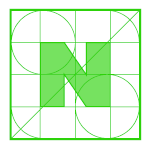Discover and explore top open-source AI tools and projects—updated daily.
RAGOnMedicalKG by  liuhuanyong
liuhuanyong
RAG pipeline for medical Q&A, combining LLMs with a knowledge graph
Top 83.1% on SourcePulse
This project provides an open-source solution for Retrieval-Augmented Generation (RAG) in the medical domain, combining Large Language Models (LLMs) with a custom-built medical knowledge graph (KG). It targets developers and researchers interested in building domain-specific QA systems, offering a foundational approach to integrating structured medical knowledge with LLM capabilities for more accurate and context-aware responses.
How It Works
The system constructs a disease-centric medical KG from web data, storing approximately 44,000 entities and 300,000 relationships in Neo4j. For a given query, it first identifies relevant entities within the KG. Then, it uses these entities to recall factual triples from the KG, which are then formatted into a prompt for an LLM (specifically Qwen-7B-Chat). The LLM generates an answer based on the retrieved facts, enabling a RAG-based question-answering service.
Quick Start & Requirements
- Install/Run: Requires Neo4j database and Python dependencies. Run
python build_medicalgraph.pyto import data (can take hours),python qianwen7b_server.pyto start the LLM server, andpython chat_with_llm.pyto query. - Prerequisites: Neo4j database, Python 3.x, Qwen-7B-Chat LLM.
- Resources: KG import can take several hours.
- Docs: Previous Project (for KG building code/data inheritance).
Highlighted Details
- KG Scale: ~44K entities (Diseases, Drugs, Symptoms, etc.) and ~300K relationships (e.g.,
common_drug,need_check,has_symptom). - RAG Approach: Entity linking, KG fact recall via Cypher queries, and LLM-based answer generation.
- Data Source: Vertical medical websites.
- Core Idea: Demonstrates a "demo-level" RAG implementation for medical QA.
Maintenance & Community
The project appears to be a personal initiative by liuhuanyong, with no explicit mention of community channels, active development, or partnerships in the README.
Licensing & Compatibility
The README does not explicitly state a license. Compatibility for commercial use or closed-source linking is not specified.
Limitations & Caveats
The project is described as "demo-level" and highlights that there is significant room for optimization in entity recognition, subgraph recall, and intent classification. The underlying LLM is specified as Qwen-7B-Chat, which may imply specific hardware or deployment requirements.
1 year ago
Inactive

 Wang-Shuo
Wang-Shuo yuwvandy
yuwvandy snap-stanford
snap-stanford dzhng
dzhng logan-zou
logan-zou naver
naver jbarrasa
jbarrasa stair-lab
stair-lab honeyandme
honeyandme BaranziniLab
BaranziniLab 1517005260
1517005260 xerrors
xerrors